What they said,
BUT
The "risetime" appears to be about 1/3 of a microsecond or more. This means that with an effective impedance of ABOUT 1000 Ohms then effective capacitance is C ~~~= T/R = 0.3 x 10^-6/1000 =~ 300 pF. Knowing how your circuit was built and the model of your scope probe and its settings become relevant at this sort of capacitance level. Whether construction is hardwired on eg vero board or on a plug in breadboard, whether you are using "bits of wire" or 100 MHz probes or ...? as probes and the brand and model of the oscilloscope all MAY matter. It is likely that the circuit itself is swamping all these effects, but they start to come potentially significant at this level.
What are the horizontal (timebase - uS/division) and vertical (amplitude V/division) settings in each case?
Did you change them between displayed results? (Horizontal = yes!, vertical = maybe. See below).
The photos are useful and do a good job of showing us both what is happening AND that you are partially fooling yourself and maybe your viewers by what you show.
When you change from the 100 kHz signal to the 500 kHz signal the waveform occupies 2 divisions in both cases. This means that you have changed the timebase by a factor of 5, from 5 uS/division to 1 uS/ division. This means that the rising waveform in the first photo is 5 x slower-rising than is apparent when making visual comparisons. This makes a difference when you are trying to find out what effects are really happening and where they are occurring.
Also, it looks like you have changed the vertical scale as well, with more sensitivity in the last photo compared to the first so that it looks taller. But, this difference may be accounted for by your probe calibration.
Have you calibrated your oscilloscope probe?
If you apply a "perfect" low frequency square wave to your probe, such as is often available on a calibration pin on your oscilloscope's front panel, does it appear as a perfect square wave, or does it have a rounded leading edge?
If the probe does not let you display a square wave response to a low frequency square wave then it will mask the results at higher frequencies. Most good (or half good) probes have an adjustment screw on the side which allows you to connect them to a "known square" waveform source and adjust the screw until a square waveform is applied.
While this may seem to be somewhat cheating (by MAKING a waveform look square regardless) it is a valid operation as long as the waveform is in fact square.
And also - you do not show the driving source at the transistor base, and it matters. You will usually use a drive resistor from a source of maybe 5 volts, and this resistor value can make an immense difference to the result. A substantial improvement in frequency response can often be obtained by adding a "speedup capacitor" across the drive resistor. when turning the base OFF this capacitor acts as a divider in conjunction with the base capacitance to effectively bypass the slow resistive discharge with a capacitive voltage step. Adding a capacitor of from under 100 pF to maybe 1 nF across (in parallel with) the drive resistor may make a significant difference.



